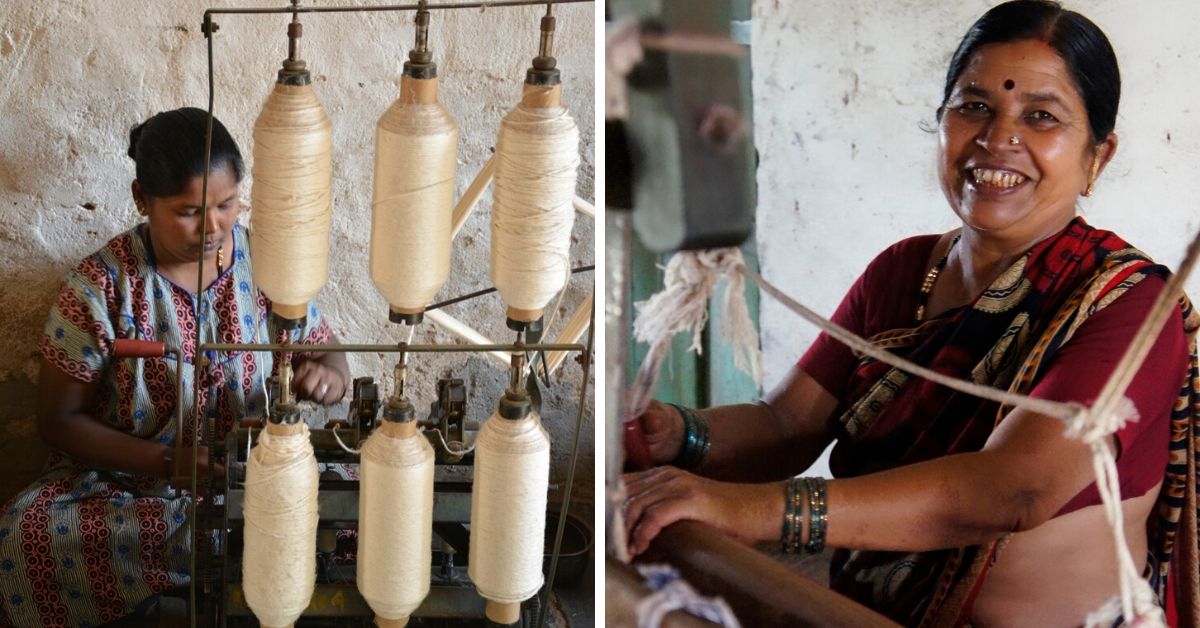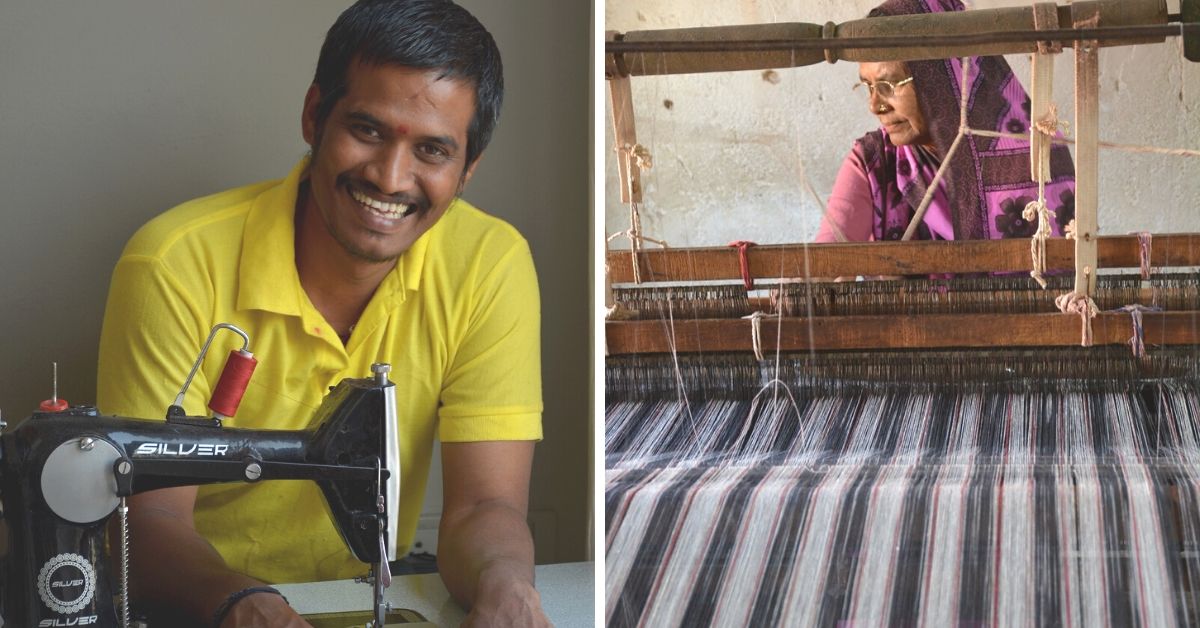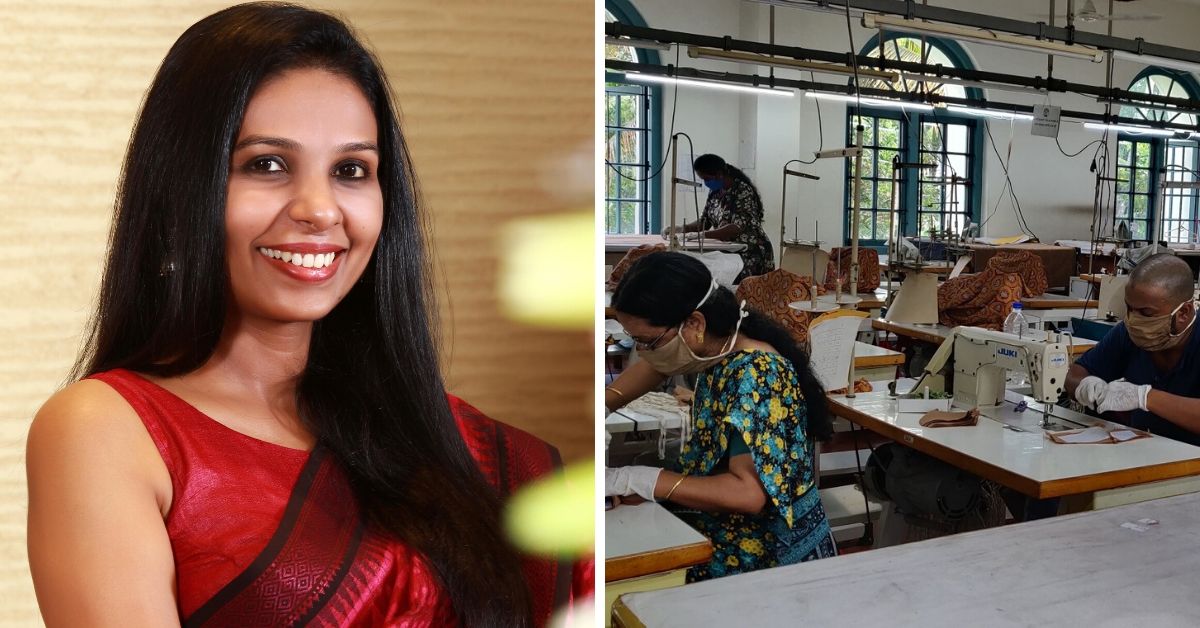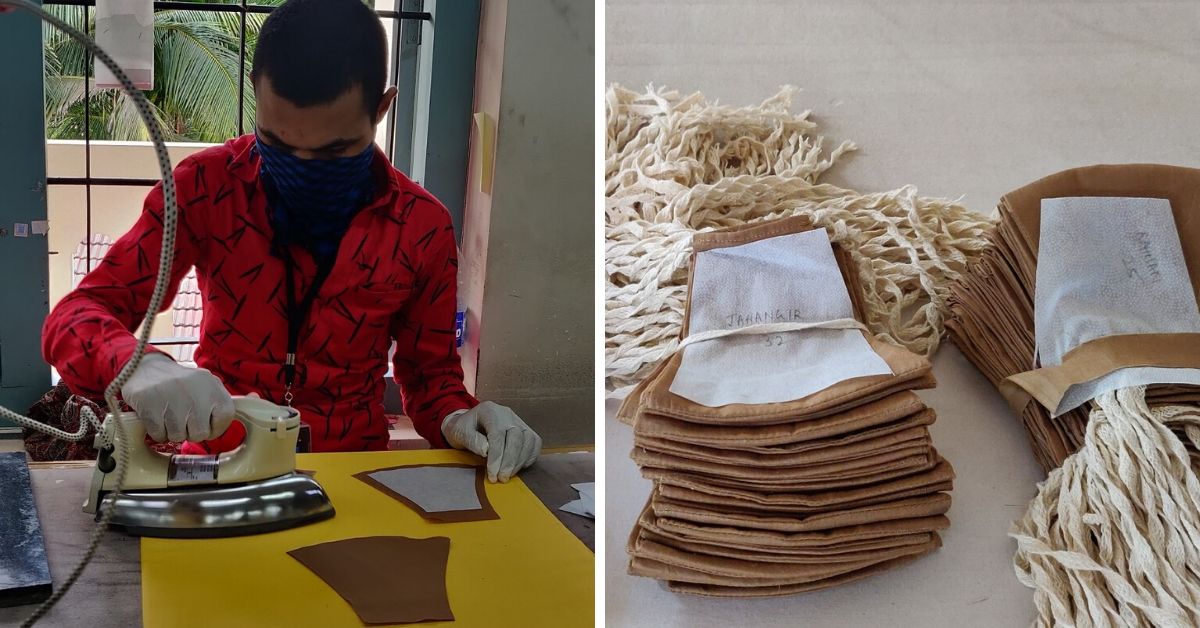What About Weavers? How India’s 2nd Largest Employment Sector Is Dealing with COVID-19
"An advantage for weavers in the north-east region is that they all have been working on their looms from home for generations."

With The Positive Collective, The Better India’s COVID-19 coverage is available to regional language publications for free. Write to [email protected] for more details.
Designers are in the business of adorning people. They have been doing this for ages. Some do it quietly from their homes, weaving while sitting on their pit looms, frame looms, semi-automatic looms or from the weaver’s society office sheds.
But with the lockdown due to COVID-19, there are no ‘swish-swoosh’ sounds of the looms, as the weavers, and allied workers, are all at home and staring at an uncertain future.
“Following the CAA agitation In December, even though we didn’t have work, we could at least go to the thick woods close to our villages, forage for fruits and vegetables to cook as an accompaniment with the rice to feed our families. Before we could come out of that episode, the lockdown started. Now, we can neither go to the forest to get food nor to the banks to get cash. We are worried about feeding our children,” says an agitated Banylla Syngkli. She is president of 32 weaver members’ Krihlang Handloom and Handicraft Co-operative Society of Umtngam village, near Shillong, Meghalaya.
Banylla and her team aren’t alone. India has a vast handloom sector employing some 43.31 lakh weavers. It’s the second-largest employment sector after agriculture. Until the 2011 census, this sector employed more than 63 lakh people, nearly 87 per cent of whom reside in villages, with women forming around 77 per cent of the workforce, hardly making Rs 50 a day.

As the sector doesn’t fall into the essential services category, their plight doesn’t attract media coverage. Even in the current pandemic, the hardship of farmers, daily wagers, construction workers gets media attention but not the predicament of the handloom sector. Because of this, they are mostly dependent on the Master craftsmen who hire them on a contract basis, the weaver’s cluster societies employing them or the fashion designers who use natural handloom fabric.
Janessaline Pyngropen, business head of DSEFH (Daniel Syiem’s Ethnic Fashion House), Shillong, Meghalaya, says, “An Advantage for weavers in the north-east region is that they all have been working on their looms from home for generations. So the social distancing norms in these times don’t affect them. The main problem we are facing since the CAA agitation is drying up of demands, so we are unable to place orders to them for hand spun and hand woven Eri silk fabric which Daniel uses for his creations.”
Many business heads like Janessaline and fashion designers from other parts of India are finding ways to keep their workforce in good spirits. They interact through phones to counsel and discuss health issues with their weavers, karigars, and other allied workers. And whenever possible, transferring some money to the employees’ accounts.

Mumbai-based fashion designer Anavila Misra of brand Anavila, who works mostly with linen weavers, says, “A majority of our artisans and weavers work from home and live in remote villages of West Bengal, Jharkhand, and Gujarat. They are following all the guidelines laid down by the government and continue to work as before. Most of them have their bank accounts, and in instances where they don’t, we pay them through master weavers and group leaders.”
Ravi Kiran of Bengaluru-based Metaphor Racha, an organisation working with khadi institutes in north Karnataka, says that they are in touch with workers of different khadi units. “Since many of them have post office accounts, we have sent the minimum amounts to the weavers and spinners. Tailors working here in Bengaluru, despite a reduction in work, are getting paid regularly, but they have taken a 25 per cent cut in their salaries. They all prefer to work and earn and not ask for ‘help’. But getting work during this time is a problem.”
Designer Shalini James of brand Mantra from Kochi, who works with 90 weavers, karigars and tailors, sent most of them back to their homes in villages of West Bengal, Bihar, and Kerala in mid-March, telling them to return when things get better. So did Mumbai-based designer Vaishali Shadangule of brand Vaishali S who has 40 karigars from different parts of the country.

Shalini says, “Except for six, all others left, and we paid them an interim salary. Their needs are few. Their small fields in remote villages yield enough food grains. They live in joint families. Whenever we call them, they confirm that they are okay, but that they want to get back as they prefer to work rather than sit idle.”
Those six workers who stayed, live close to Shalini’s workplace, helping her meet an order of 3,000 reusable face masks for police personnel of Kerala. Strictly maintaining the social distancing orders, these workers are happy that they have work.
Ajitha Suresh, president of Cherai Handloom Weavers Co-operative Society number 648 in Kerala, speaks about how they are helping their weavers in these tough times. “We are paying salaries to home weavers who have looms, who can work from home. We can’t pay wages to weavers who don’t have home looms and who, because of social distancing, can’t come to work on the society’s looms. So a common decision is being made by all weaving societies in Paravur to compensate them.”

She adds, “As it was the time of the Vishu festival, every weaver was paid Rs 2,000 in advance, plus Rs 1,000 was credited as kshemanidhi.”
Another designer, Sreejith of Rouka brand from Kochi, says, “We work with Care4Chendamangalam which is actively helping these societies. At this moment, everything has slowed down. We are constantly ensuring that everyone is safe and their societies keep them informed. Besides, the government system in Kerala has helped every worker.”
If most designers are doing their best to support their workers, what is the cause for worry? “We need to counsel them and reassure them that their jobs will be intact when they return. I speak to at least two workers each day and reassure them,” says Ravi.
Moreover, several designers have already started thinking of post-pandemic times. They feel that most apparel factories may close because buyers are cancelling orders for July/August. They are even stalling payments that are due. In such a situation, paying salaries will become difficult in all factories.
Also Read: A Daughter’s Moving Ode to Postmaster Dad, an Unsung Hero in COVID-19 Pandemic
Anavila concludes, “The slump in sales will lead to a staggered production eventually, but I do think that in the mid-term, more people will come back to handwoven, sustainable brands/products, which is how we will bounce back from this crisis sooner. This, in turn, will be very good for the artisans and weavers’ clusters.”
(Edited by Shruti Singhal)
Like this story? Or have something to share?
Write to us: [email protected]
Connect with us on Facebook and Twitter.
If you found our stories insightful, informative, or even just enjoyable, we invite you to consider making a voluntary payment to support the work we do at The Better India. Your contribution helps us continue producing quality content that educates, inspires, and drives positive change.
Choose one of the payment options below for your contribution-
By paying for the stories you value, you directly contribute to sustaining our efforts focused on making a difference in the world. Together, let’s ensure that impactful stories continue to be told and shared, enriching lives and communities alike.
Thank you for your support. Here are some frequently asked questions you might find helpful to know why you are contributing?


This story made me
-
97
-
121
-
89
-
167













